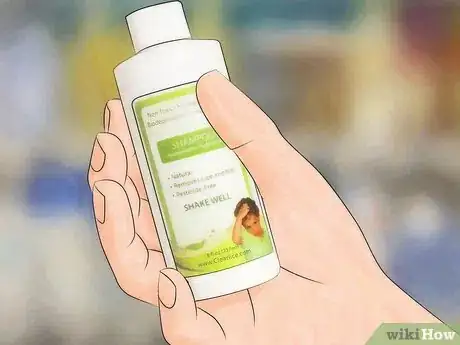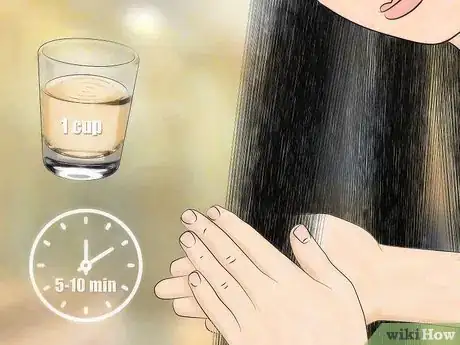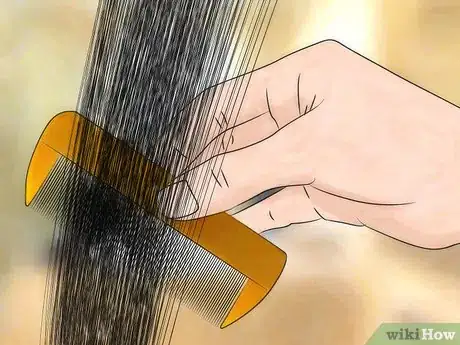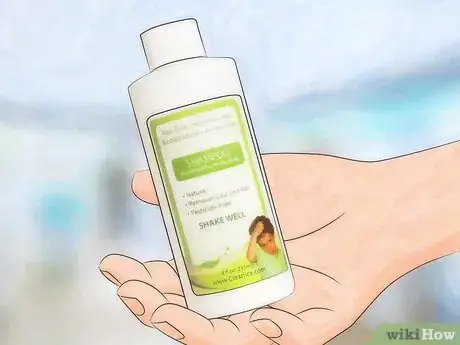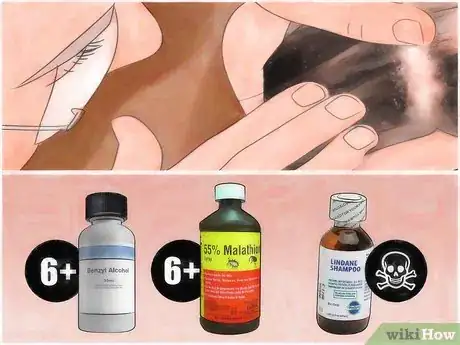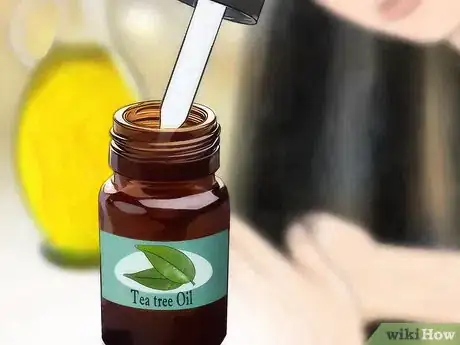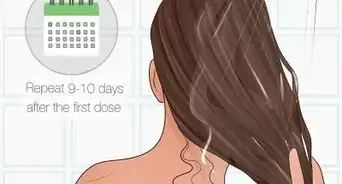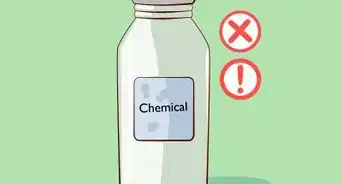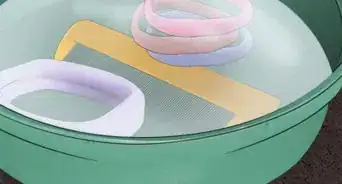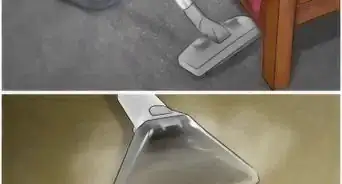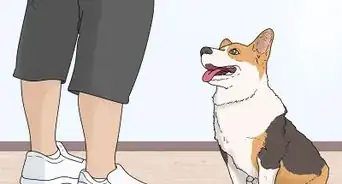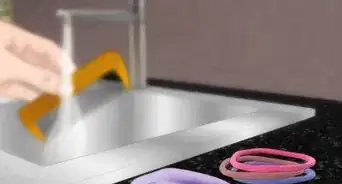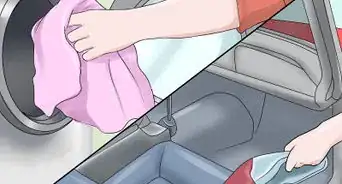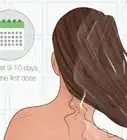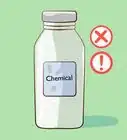This article was medically reviewed by Luba Lee, FNP-BC, MS. Luba Lee, FNP-BC is a Board-Certified Family Nurse Practitioner (FNP) and educator in Tennessee with over a decade of clinical experience. Luba has certifications in Pediatric Advanced Life Support (PALS), Emergency Medicine, Advanced Cardiac Life Support (ACLS), Team Building, and Critical Care Nursing. She received her Master of Science in Nursing (MSN) from the University of Tennessee in 2006.
wikiHow marks an article as reader-approved once it receives enough positive feedback. In this case, 91% of readers who voted found the article helpful, earning it our reader-approved status.
This article has been viewed 794,559 times.
Head lice are little insects that live on the human scalp and feed on blood.[1] Lice can crawl but can't fly, so they spread from person to person via very close contact. This is why children are most affected, because they tend to play close together. In fact, it's estimated that between 6 and 12 million American school children get head lice each year.[2] Vinegar is an old home remedy used to combat head lice by not allowing their eggs (nits) to stick to hair. Other treatments, both natural and pharmaceutical, can target and kill head lice directly. Using a combination of remedies and strategies is likely the best approach to treating head lice.
Steps
Using Vinegar for Head Lice
-
1Understand the benefits and limits of using vinegar. Vinegar is a common home remedy for head lice, but some people mistakenly think it will kill adult lice and their eggs, which are called nits. In reality, vinegar cannot kill head lice directly because it's not toxic to them. However, it can help remove the nits stuck to your hair, which prevents new lice from hatching and infesting your head. More specifically, the acetic acid in vinegar dissolves the protective shells surrounding nits and disables them from sticking to your hair.
- After the application of vinegar, the nits either fall out of your hair or become much easier to remove with a fine-toothed comb.
- Although vinegar can't kill adult lice, they may be able to kill newly hatched lice called nymphs. More research is needed to better understand the impact of vinegar or acetic acid on head lice.
-
2Use an over-the-counter medicated shampoo first. Since vinegar will not kill the lice and eggs, it is important to treat the lice with a medicated shampoo first. Lice treatment shampoos are also known as pediculicides.[3] After using a pediculicide, you can use vinegar to help remove the nits from your hair.
- Using a medicated shampoo first will help to ensure that the adult lice are dead and this will reduce the chances of spreading the lice.
Advertisement -
3Choose the type of vinegar. All types of vinegar contain acetic acid, but some types and brands are a little more concentrated than others. In general, chose a vinegar that has about 5% acetic acid — it's enough to dissolve the coatings on nits, but not acidic enough to irritate most people's skin. White vinegar is plain acetic acid diluted in water and usually the least expensive choice. Red wine vinegar is more expensive and often has between 5-7% acetic acid. Apple cider vinegar will also work, but make sure to choose non-filtered and pasteurized types because they tend to be the strongest concentration (around 5% acetic acid).
- A much higher concentration of acetic acid (more than 7%) might irritate your scalp, although much weaker concentrations might not be able to dissolve the nits attachment to you hair. Stick to vinegars that have between 5-7% acetic acid.
- The itching from head lice is due to an allergic reaction to lice saliva. Not all people have an allergic reaction and get itchy.
-
4Stand in the shower or tub and apply the vinegar. Once you've decided on the type and concentration of vinegar, undress yourself and stand in the tub or shower. Dampen your hair with some water first (but not too much so that it's dripping wet) and then pour on a few cups of vinegar directly to your scalp. Massage the vinegar into your scalp and try to cover as much of your hair as possible — this might be challenging if your have long hair, but take your time. Then, let the vinegar sit in your hair for between 5-10 minutes, which is enough time for it to dissolve the nit's exoskeletons (coverings).
- Make sure to close your eyes when you apply the vinegar. Diluted acetic acid can't damage your eyes, but it can certainly make them sting for a few minutes.
- Avoid getting vinegar on your clothes because it can stain them, particularly red wine and apple cider vinegars.
-
5Run a fine-toothed comb through your hair. After the vinegar has been in your hair for at least 5 minutes, run a fine-toothed comb through it thoroughly. The loosened nits and some adult lice will be removed by intensive combing.[4] For best results, consider buying a special "nit comb" (very fine-toothed plastic or metal combs) at the pharmacy or online. After combing your hair for a few minutes, rinse out the remaining vinegar and towel dry it — but make sure not to share your towel with anyone while you still have some head lice.
- Using vinegar is great for loosening nits from your hair, but not for killing mature lice on your scalp. Thus, don't be surprised to see some head lice after a vinegar treatment.
- Vinegar treatments can be done daily until no more nits remain attached to your hair. The acetic acid will also remove the oils from your hair, so it might look dry or frizzy after the vinegar treatments.
- Nits hatch within 7-9 days of being laid, and mature lice can live up to 3-4 weeks. Thus, if you're just using vinegar to combat your head lice, it may take a month before the infestation is completely gone.
Using Other Remedies for Head Lice
-
1Ask your doctor about over-the-counter shampoos. Make an appointment with your doctor or dermatologist and get properly diagnosed. Then ask your doctor about the most effective over-the-counter (OTC) shampoos or ointments for head lice that can be purchased at mainstream pharmacies. Your doctor will likely recommend OTC products based on pyrethrin, a compound from chrysanthemum flowers that's toxic to lice.[5] Popular brands include Nix (a synthetic version of pyrethrin) and Rid (pyrethrin mixed with other compounds toxic to lice).
- These pyrethrin-based shampoos are effective for killing head lice, but not usually nits. As such, consider combining vinegar and pyrethrin treatments to get rid of both lice and their nits.[6]
- The side effects of using pyrethrin-based shampoos include scalp irritation, redness and itchiness — especially among children allergic to chrysanthemum or ragweed.
- Head lice don't spread disease (bacterial or viral), but scalp itchiness can trigger excessive scratching that leads to infected sores in some people.[7]
- Do not follow up the lice treatment shampoo with a regular shampoo and/or conditioner. This will reduce the effectiveness of the lice treatment shampoo.[8]
-
2Consult with your doctor about prescription medications. If the head lice infestation is not controlled with vinegar and/or OTC shampoos, then you should talk to your doctor about getting a stronger medication. In some geographic locations, head lice have developed resistance to OTC shampoos, so prescription medications are all that work. The most common prescription medications recommended for head lice are benzyl alcohol (Ulesfia), malathion (Ovide) and Lindane.[9] Collectively, medicines that can kill lice are called pediculicides and they all should be used cautiously, particularly with children.
- Benzyl alcohol kills lice on the scalp by depriving them of oxygen. It's effective, but potential side effects include skin irritation, allergic reaction and seizures, so it's not recommended for children younger than 6 months of age.
- Malathion shampoo is only approved for children aged 6 years or older due to potential serious side effects. Be careful not to expose this shampoo to a hot hair dryer or get it near an open flame because of its high alcohol content.
- Lindane shampoo is sort a "last resort" treatment for head lice because of its high risk of serious side effects (including seizures). As such, it's not recommended by the American Academy of Pediatrics for use on children of any age or pregnant women.[10]
-
3Consider using a natural herbal remedy. Some research indicates that certain plant-based oils may have a toxic effect on head lice and their eggs (nits). The plant oils with the most promise for combating head lice include tea tree oil, anise oil, ylang ylang essential oil and nerolidol (a compound found in many plants). Although these plant oils are not approved by the U.S. Food and Drug Administration (FDA) to treat lice, they have a pretty good safety record in general and likely worth a try if your budget allows for it.
- Plant oils such as tea tree oil are often found in natural medicated shampoos marketed to treat dandruff and psoriasis, but they can work well to combat head lice also.
- In general, these plant-based oils are as safe for children as they are for adults — no serious side effects have been reported.
- Some other natural remedies that can kill head lice by "smothering" them (depriving them of oxygen) include olive oil and butter. Apply either to your scalp for 5-10 minutes before rinsing off with a medicated shampoo for best results.
- Head lice cannot jump or fly, so they spread to others usually by head-to-head contact. However, indirect methods of spreading are possible via sharing hats, brushes, combs, towels, pillows, scarves, hair accessories and stereo headphones.
References
- ↑ http://www.mayoclinic.org/diseases-conditions/head-lice/basics/definition/con-20030792
- ↑ https://www.aad.org/public/diseases/contagious-skin-diseases/head-lice
- ↑ http://www.cdc.gov/parasites/lice/head/treatment.html
- ↑ http://www.fda.gov/ForConsumers/ConsumerUpdates/ucm171730.htm
- ↑ http://www.mayoclinic.org/diseases-conditions/head-lice/basics/treatment/con-20030792
- ↑ http://www.mayoclinic.org/diseases-conditions/head-lice/basics/treatment/con-20030792
- ↑ https://www.aad.org/public/diseases/contagious-skin-diseases/head-lice
- ↑ http://www.cdc.gov/parasites/lice/head/treatment.html
- ↑ http://www.mayoclinic.org/diseases-conditions/head-lice/basics/treatment/con-20030792
About This Article
If you have head lice, you can help remove the nits stuck to your follicles by applying vinegar to your scalp and combing it through your hair. Since vinegar won’t actually kill the lice or their eggs, make sure to use a medicated shampoo in addition to the vinegar. When choosing vinegar for your hair, opt for one that has about 5% acetic acid, since this is enough to dissolve the coatings on nits, but not acidic enough to irritate your skin. For the best results, treat your hair with vinegar every day after using medicated shampoo until all of the nits are gone, which may take up to a month. For more tips from our Medical co-author, like how to herbal remedies on head lice, scroll down.

